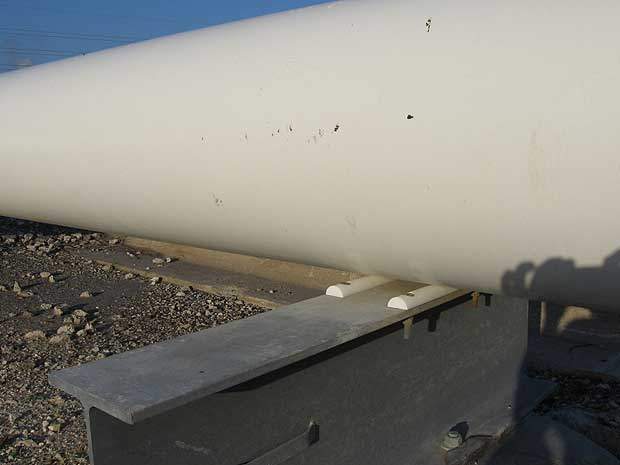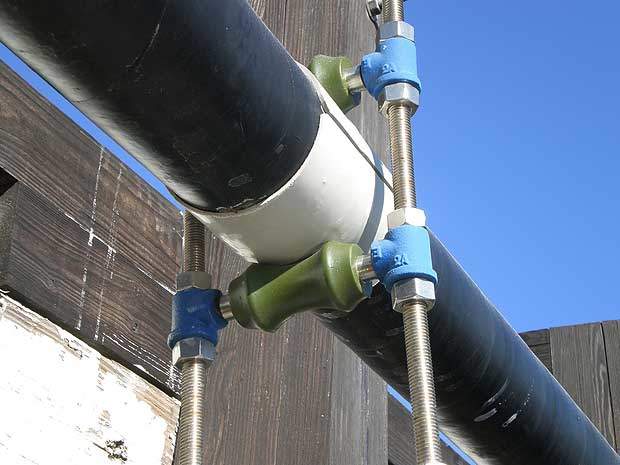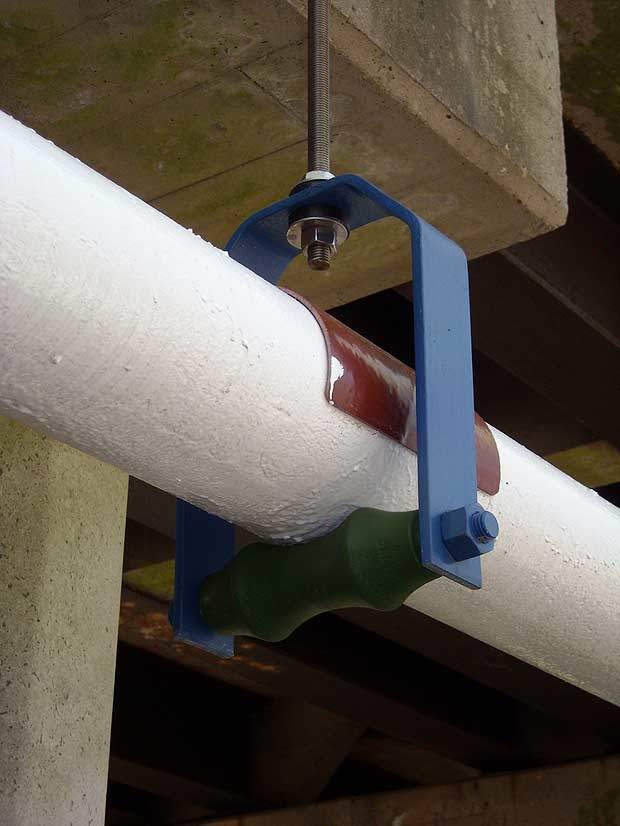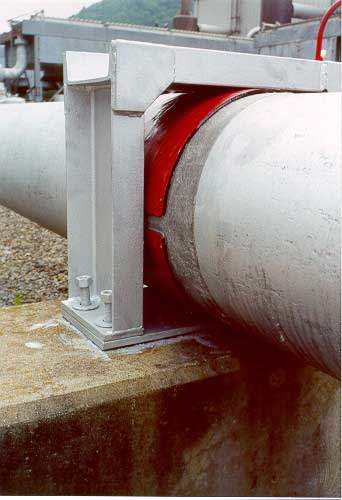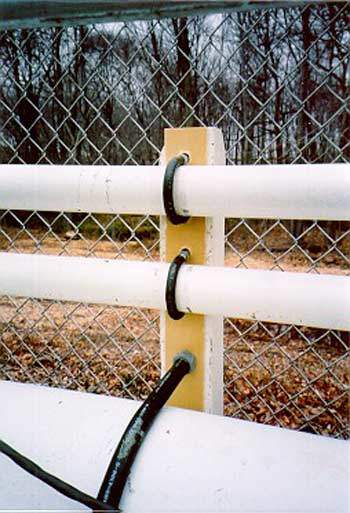Glas Mesh Company manufactures and fabricates fiberglass reinforced plastic (FRP) shields, saddles, spacers and half rounds used to prevent and/or correct pipeline metal-to-metal contact shorts and crevice corrosion.
FRP shields, saddles and FRP half rounds
FRP shields, saddles and FRP half rounds are commonly used to electrically isolate pipe supported above grade. FRP plastics are ideal for all types of pipe to support point-loading applications because they a high compressive strength, will not become brittle in cold temperatures, and do not soften or distort from heat. Our FRP materials are used for maintenance and new construction.
Non-conductive pipe rollers
Our affiliated company LB&A, manufactures both long and short pattern non-conductive pipe rollers, primarily used to provide a non-abrasive, electrically isolating alternative to metal rollers. The polyurethane-based non-conductive rollers are formulated for long-term atmospheric durability and are a used as a direct replacement for cast iron rollers.
FRP saddles for electrical isolation of pipelines
FRP Type# 240 shields and Type# 180 saddles are a pre-shaped method of electrical isolation for suspended pipelines. They are also a means of abrasion control on coated pipes and are generally adaptable to any hanger or support. The shields and saddles are highly pigmented for long-term UV resistance.
FRP spacers and half rounds for pipelines
FRP Type# 120 and Type# 60 spacers are a pre-shaped method of preventing and/or correcting the common problem of exposed steel pipe crevice corrosion. They are positioned between the pipe and its support. A special epoxy adhesive secures the FRP spacer to the pipe and seals the steel substrate from the atmosphere.
FRP half rounds are used with or without coated U-bolts and are designed to eliminate pipe to support contact and manage crevice corrosion.
Non-conductive rollers, FRP shields and saddles
Non-conductive rollers are typically used with FRP shields and saddles when the pipe has a thick barrier coating. On painted or thin barrier coatings the non-conductive rollers are installed as a means to isolate the pipe from the support or hanger and to serve as a method of coating abrasion control. In exposed environments the non-conductive rollers will not bind or corrode to the axles and stop rolling as do the cast metal rollers.


